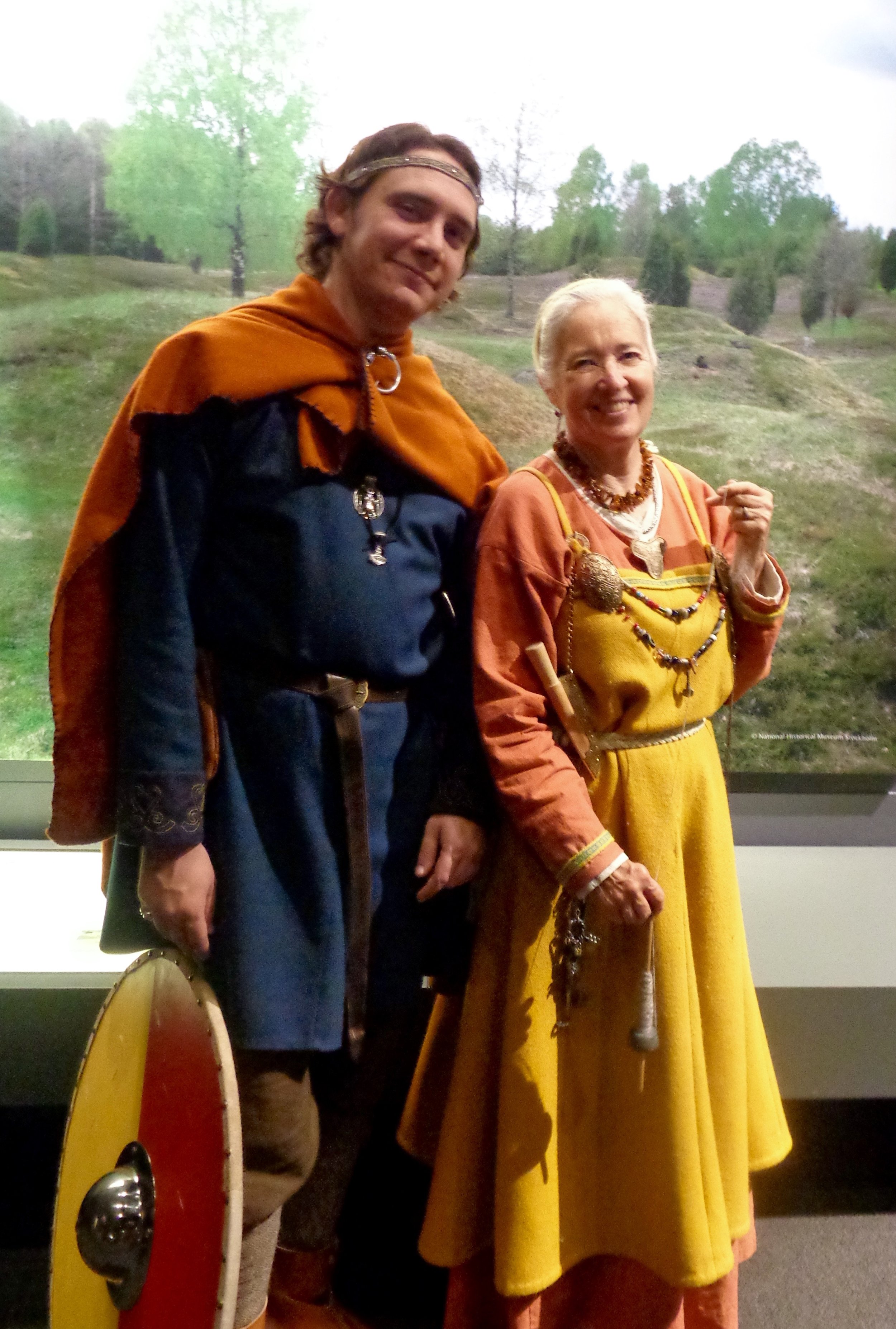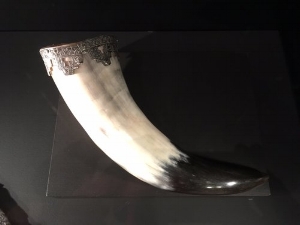The wolf Fenrir with Týr's severed hand in his mouth and a god, who might be Þórr, holding a spear and a spiked club, from the Binding of Fenrir myth in Gylfaginning in Snorri's Edda. Jakob Sigurðsson 1727-1779.
CS Peterson: When I was little I liked it because in the Norse myths the girls got to play with swords too. There weren’t a lot of women stuck in towers waiting to be saved. Norse mythology is still a constant presence in my teaching life-- at least one of my students will pick Vikings or swords every year. It might be because they know they’ll get to practice throwing axes and visit the blacksmith. There’s nothing better than getting a chance to hit hot metal with a hammer when you’re eight years old. I love listening to Gaiman’s voice. The first time I heard him reading was the audio version of Ocean at the End of the Lane. When I read his Norse Mythology I can hear the cadence and rhythm that he brings to storytelling. The conceit of this book is that he is retelling these stories to his new little boy. The stories are kept pretty PG. When Loki gets toasted and shaves Sif’s hair off, Gaiman has Thor talk about why lovely Sif would be to embarrassed to remain bald he says: “People will think that her head was shaved for punishment. That she did something she should not have done, did it with someone she should not have.” I can just picture a precocious child reading this book and passing right over that sentence, then reading these stories again as an older teen and finding a darker hint about life in Viking times. He does the same thing in the story of the mead of poetry. Gaiman came almost to the end of the story and I thought he might just skip the part about where bad poetry comes from, but then he says: “But that is not quite the whole story. There is one more thing to tell you. The delicate among you should stop your ears, or read no further.” Then he proceeds to relate the tale of the noble all-father’s wettest fart.
CS Peterson gets some pointers on sheildcraft from the local Jarl
CS Peterson: There are lots of stories, and morals to be drawn from them, at “Vikings: Beyond the Legend,” the exhibit at the Denver Museum of Nature and Science. It is the largest collection of Viking artifacts to visit North America in years. There are rooms full of interactive displays exploring every aspect of life in 8th-11th century Scandinavia. Artifacts exploring the complexities of Norse cosmology, belief and practice are abundant. Especially interesting is seeing evidence of the transition from the older belief systems to Christianity.
But the best parts of the exhibition are the re-enactors interpreting various people who lived in northern Europe (and, for a moment, a little bit of North America)during this time. We met a young Jarl who told raucous tales of the best harvest party ever, punctuated with reverent acknowledgments of Freyr and Thor. A wealthy Viking businesswoman let me try my hand at spinning with a drop spindle. Also a Völva, a female shaman, visits from time to time and tells stories of the Æsir and Vanir, the two merged factions of gods, and Yggdrasil, the world tree that holds the Nordic cosmos together. If you love the boats, there are expert, white-shirted docents on hand who are encyclopedic on every aspect of the Viking boat, its construction and evolution.
The Viking exhibit runs until mid-August. Take a lazy summer day to read Gaiman’s retelling of the stories, then come visit ancient Scandinavia in the air-conditioned coolness of DMNS. And leave the horned helmets at home!
Excerpted from "Norse Mythology" by Neil Gaiman and Viking Relics.w/ co-contributor Lisa Mahoney. Photo credits Lisa Mahoney and CS Peterson. To read more please visit FictionUnbound.com







